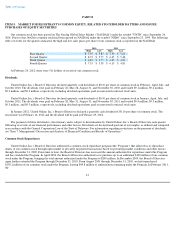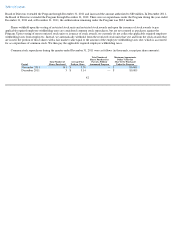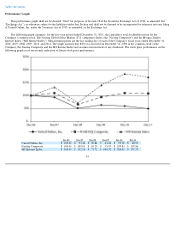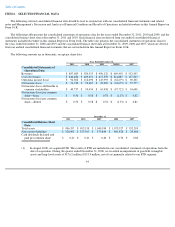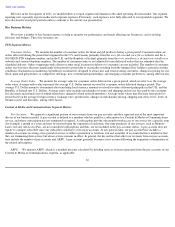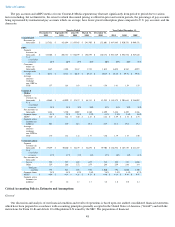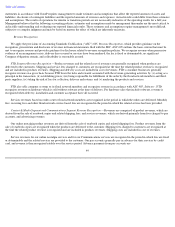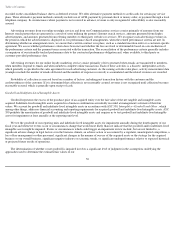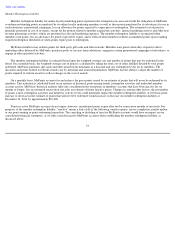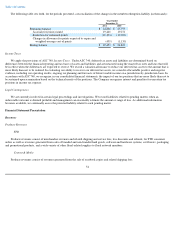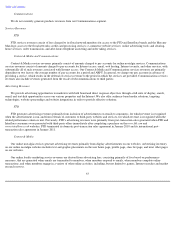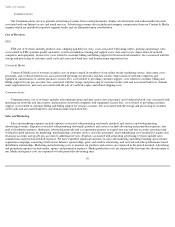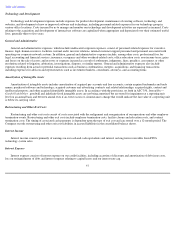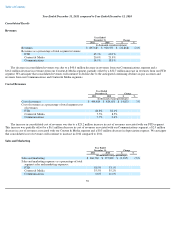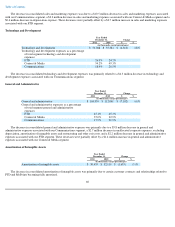NetZero 2011 Annual Report Download - page 53
Download and view the complete annual report
Please find page 53 of the 2011 NetZero annual report below. You can navigate through the pages in the report by either clicking on the pages listed below, or by using the keyword search tool below to find specific information within the annual report.
Table of Contents
recorded on the consolidated balance sheets as deferred revenue. We offer alternative payment methods to credit cards for certain pay service
plans. These alternative payment methods currently include use of ACH, payment by personal check or money order, or payment through a local
telephone company. In circumstances where payment is not received in advance, revenue is only recognized if collectibility is also reasonably
assured.
Advertising revenues from our online nostalgia services and from our Communications services consist primarily of amounts from our
Internet search partner that are generated as a result of users utilizing the partner's Internet search services, amounts generated from display
advertisements, and amounts generated from referring members to third-party websites or services. We recognize such advertising revenues in
the period in which the advertisement is displayed or, for performance-based arrangements, when the related performance criteria are met. In
determining whether an arrangement exists, we ensure that a written contract is in place, such as a standard insertion order or a customer-
specific
agreement. We assess whether performance criteria have been met and whether the fees are fixed or determinable based on a reconciliation of
the performance criteria and the payment terms associated with the transaction. The reconciliation of the performance criteria generally includes
a comparison of our internally-tracked performance data to the contractual performance obligation and, when available, to third-party or
customer-provided performance data.
Advertising revenues for our online loyalty marketing service consist primarily of fees generated when emails are transmitted to members,
when members respond to emails and when members complete online transactions. Each of these activities is a discrete, independent activity,
which generally is specified in the sales agreement for each advertising customer. As the earning activities take place, activity measurement data
(examples include the number of emails delivered and the number of responses received) is accumulated and the related revenues are recorded.
Probability of collection is assessed based on a number of factors, including past transaction history with the customer and the
creditworthiness of the customer. If it is determined that collection is not reasonably assured, revenue is not recognized until collection becomes
reasonably assured, which is generally upon receipt of cash.
Goodwill and Indefinite-Lived Intangible Assets
Goodwill represents the excess of the purchase price of an acquired entity over the fair value of the net tangible and intangible assets
acquired. Indefinite-lived intangible assets acquired in a business combination are initially recorded at management's estimate of their fair
values. We account for goodwill and indefinite-lived intangible assets in accordance with ASC 350, Intangibles—Goodwill and Other , which
among other things, addresses financial accounting and reporting requirements for acquired goodwill and indefinite-lived intangible assets. ASC
350 prohibits the amortization of goodwill and indefinite-lived intangible assets and requires us to test goodwill and indefinite-lived intangible
assets for impairment at least annually at the reporting unit level.
We test the goodwill of our reporting units and indefinite-lived intangible assets for impairment annually during the fourth quarter of our
fiscal year and whenever events occur or circumstances change that would more likely than not indicate that the goodwill and/or indefinite-lived
intangible assets might be impaired. Events or circumstances which could trigger an impairment review include, but are not limited to, a
significant adverse change in legal factors or in the business climate, an adverse action or assessment by a regulator, unanticipated competition, a
loss of key management or other personnel, significant changes in the manner of our use of the acquired assets or the strategy for the acquired
business or our overall business, significant negative industry or economic trends, or significant underperformance relative to expected historical
or projected future results of operations.
The determination of whether or not goodwill is impaired involves a significant level of judgment in the assumptions underlying the
approaches used to determine the estimated fair values of our
50


